Operations Report – January 1st
Crew 306 Operations Report 01-01-2025
SOL: 10
Name of person filing report: Keegan Chavez
Non-nominal systems: Overflow sensor
Notes on non-nominal systems: The overflow sensor in the bathroom went off when toilet fill sensor had just hit “Full”, the battery has been removed from the overflow alarm at the moment as it still goes off even after the toilet tank has been emptied
ROVERS
Spirit rover used: No
Hours: (before EVA):
Beginning charge: (Before EVA):
Ending charge: (On return from EVA, before recharging):
Currently Charging: Yes
Opportunity rover used: Yes
Hours: (before EVA): 200.1
Beginning charge: (Before EVA): 100
Ending charge: (On return from EVA, before recharging): 44
Currently Charging: Yes
Curiosity rover used: No
Hours: (before EVA):
Beginning charge: (Before EVA):
Ending charge: (On return from EVA, before recharging):
Currently Charging: Yes
Perseverance rover used: Yes
Hours: (before EVA): 299.3
Beginning charge: (Before EVA): 100
Ending charge: (On return from EVA, before recharging): 53
Currently Charging: Yes
General notes on rovers: none
Summary of Hab operations: Operations were nominal
Water Use (please use both methods to estimate water usage)
Time of measurements: 12/31/2024 1700 – 1/1/2025 1700
1) Per formula: 26.14 gal
2) Smart Home Dashboard: 23.54 gal
Water (static tank, remaining gallons): 236.32 gal (per formula)
Static tank pipe heater (on or off): On
Static tank heater (on or off): On
Toilet tank emptied (no or yes): yes
Summary of internet: nominal internet usage
Summary of suits and radios: Suits 1, 2, 6 were used for EVA today, all radios are charged and fully operational
Summary of GreenHab operations: GreenHab Officer: watered plants and the floor to increase humidity, extra water was given to tomatoes, harvest basil, parsley and cucumber
WATER USE: 8.5 gal
Heater (On or Off): On, automatic
Supplemental light (hours of operation): 1700 – 2200
Harvest (name, weight in grams): basil: 16g, parsley: 4g, cucumber: 186g
Summary of Science Dome operations: GreenHab Officer: refilled feeding syringes, moved feeding jars to Hab to clean, used silicone to seal humidity chambers back to jar, Commander: used lab oven 1 at 125C for 2 hours to dry samples from Eos Chasma, used 2 pots from GreenHab, made 5 new solar cells from processes hematite, cells read 0.6V for 3-4 mins
Dual split (Heat or AC, On or Off): On, automatic
Summary of RAM operations: none
Summary of any observatory issues: No issues
Summary of health and safety issues: No issues
Questions, concerns and requests to Mission Support: Empty trash from RAM airlock
EVA Report – January 1st
Crew 306 EVA Report 01-01-2025
EVA # 11
Author: Ryan Villarreal
Purpose of EVA: The first objective of this EVA was to test Crew Journalist Rodrigo Schmitt’s DRONE project for GPS and Li-DAR data collection capability. The second objective was to collect EMF meter readings from the region for Crew Geologist Elizabeth Howard’s research.
Start time: 10:02
End time: 12:55
Narrative: The EVA Crew stepped out of the airlock at 10:02 and proceeded to drive Perseverance and Opportunity South along Cow Dung Road until reaching the intersection of Trail 1101 and White Rock Canyon. The crew dismounted the rovers and took a short walk to the bottom of White Rock Canyon to begin testing the DRONE system. The DRONE was unable to collect data due to an issue connecting wirelessly via SSH to the data collection system. The crew spent 30 minutes troubleshooting before determining it would need to be investigated back at the HAB where the onboard computer could be directly accessed. The crew then continued the mission of EMF readings by walking out of the canyon and North along Cow Dung Road, placing the EMF reader at the start of trail 1101. The crew activated the reader and buried it, marking the location for later retrieval. As the EMF reader needs to be active over a period of time, the crew continued to hike West on trail 1101 to scan for potential iron-containing rocks along the trail for Crew Commander Jesus Meza’s research. The crew stopped at the base of Barrainca Butte before turning around and taking the same trail back to the EMF reader. The crew recovered the EMF reader and returned to the parked rovers and drove back to MDRS, arriving at 12:55. From this EVA, potential drone locations were marked for EVA #12, and approximately 1.5 hours of EMF readings were recorded. The crew also gathered 4 samples of potentially iron-containing rocks for analysis by Crew Commander Jesus Meza. The communication issues for the DRONE system were investigated after the EVA and were successfully resolved for EVA #12.
Destination: White Rock Canyon at (520250E, 4247500N), and Barrainca Butte at (519000E, 4247400N)
Coordinates (use UTM WGS 84): Rovers were parked at (520216E, 4247499N), and the crew hiked to White Rock Canyon (520297E, 4247567N), before then hiking to Barrainca Butte (519050E, 4247313N).
Participants: Crew Engineer Keegan Chavez, Crew Journalist Rodrigo Schmitt, and Health and Safety Officer Ryan Villarreal
Road(s) and routes per MDRS Map: Cow Dung Road taken South to White Rock Canyon. Rovers were parked on the road at (520216E, 4247499N) and the crew proceeded on foot Northeast into the White Rock Canyon. The crew then proceeded Northwest to Trail 1101, which was taken to Barrainca Butte.
Mode of travel: Rovers along Cow Dung Road from the MDRS campus until disembarking at (520216E, 4247499N) and proceeding on foot.
Sol Summary – January 1st
Crew 306 Sol Summary Report 01-01-2025
Sol: 10
Summary Title: New year, same old crew 306.
Author’s name: Jesus Meza
Mission Status: Active. All systems are nominal.
Sol Activity Summary:
Last night, mission support was kind enough to provide special coms for the crew to watch the “Boot Drop” in Prescott Arizona to ring in the Mountain Time new year. We huddled around a laptop eating brownies as we watched the “time delayed” feed of the celebrations on earth. By the time we got everything cleaned up it was 01:30. Naturally we had a late start to the day on Sol 10… at 07:30. Jesus made speggs (spam and eggs) and potatoes for breakfast. At 9:15 the crew started preparations for EVA 11. Keegan led Rod and Ryan down to White Rock Canyon, and Barrianca Butte to perform Li-DAR scans of the two sites and take ambient magnetic measurements for Elizabeth. Meanwhile at the HAB, Adriana, Elizabeth, and Jesus took turns running coms while performing general tasks such as cleaning and organizing the HAB. The EVA team returned to the HAB at 12:55. Elizabeth made rice and ground beef for the crew to eat during lunch. At 15:30 the crew split up to do research and general tasks. Rod, Ryan, and Keegan continue to work on improving the DRONE data collection software. Adriana continues to monitor her mushrooms, and Jesus continues to work on fabricating solar cells using the hematite samples he collected on EVA. In the late afternoon Keegan and Ryan began another game of Terraforming Mars, a game which half of the crew seems to be consumed by. For dinner we are having a vegetable stir-fry to make up for having brownies yesterday.
Look Ahead Plan:
Sol 11 will look forward to the end of our rotation. Rod, Elizabeth, and Keegan will return to the site of EVA 11 to perform more Li-DAR scans. Ryan will run coms and provide tech support for the DRONE. Jesus will perform final experiments with his solar cells, and Adriana will begin to wrap up her mushroom study. The rest of the day will be spent on VR cognitive test and wrapping up our research in anticipation of the end of our rotation on Sol 12.
Anomalies in work: None.
Weather: Today was a cold day with a high temperature of 41 degrees F. Skies were clear and winds were low with an average speed of 1 mph, and gusts up to 6 mph.
Crew Physical Status: The crew is physically well, but sad that our rotation is ending soon.
EVA:
EVA 11 saw Keegan, Rod, and Ryan travel to White Rock Canyon and Barrainca Butte. The team’s goal was to take ambient magnetic measurements for Elizabeth’s project and perform Li-DAR scans of the area. After several attempts, the team was unable to connect to DRONE’s onboard computer to initiate data collection. This time it was a problem with the SSH portal, rather than the code problems observed before EVA 10. Because of this problem, the team was unable to perform the Li-DAR scans. The team did however take the required magnetic data, and identified several spots ideal for scanning. The team looks to return to the site on Sol 11, for what is likely to be our last EVA.
Reports to be filed:
Sol Summary, Journalist Report, Greenhab Report, Operations Report, Crew Photos, EVA Report, and EVA request.
Support Requested: None.
GreenHab Report – January 1st
Crew 306 GreenHab Report 1Jan2025
GreenHab Officer: Adriana Sanchez
Environmental control (fan & heater): Heater and fan on automatic at 94 and off at 82
Average temperatures (last 24h): 79.9
Maximum temperature (last 24h): 89.8
Minimum temperature (last 24h): 70.0
Hours of supplemental light: 1700 – 2200
Daily water usage for crops: 8.5 gallons
Daily water usage for research and/or other purposes: None
Water in Blue Tank (200-gallon capacity): 134.5 gallons
Time(s) of watering for crops: 10:30 am, 4:30pm
Changes to crops: None
Narrative: Some of the tomatoes looked a little wilted so I made sure to give them extra water today. I went back and checked on them a few times and they plumped up by the EOD. The sunflower and pea transplants are both looking healthy and happy. The carrots and tomatoes are getting pretty sizable, they will be ready for the next crew.
Harvest: 186 g Cucumbers, 16g of Basil, 4g of Parsley
Support/supplies needed: None
Journalist Report – December 31st
Perseverance
“"The master has failed more times than the beginner has even tried.” – Stephen McCranie
If asked what encompasses the job of an astronaut, a suitable definition could be pushing the boundaries of what has yet been explored, defying all odds towards the understanding of the unknown. However, this description (and similar ones in the same fashion) also applies to the role of a scientist, who, perhaps a bit differently, goes beyond the surface in the comfort of a lab with a coffee in their hands. Naturally enough, all of us from Crew Montes are scientists conducting our own experiments – breaching the limits of human knowledge both from the comfort of our workspace and from the dangers of Martian atmosphere.
In Sol 9, however, our crew focused our day wearing our scientist hats, improving our research inside the hab (even though I must point out that these hats were also a celebration of New Year’s Eve). After three exhausting EVA days in a row, this much needed break could well be interpreted as a voluntary choice of prudence and wisdom as we approach the end of our mission – but that is not fully true. In fact, the crew was still (ever so slightly) craving another EVA for more data collection, but science doesn’t really work that way. In reality, our planned EVA was cancelled at the last minute due to technical difficulties with the LIDAR software for our drone project, reflecting an essential part of the scientific process: frustration.
It is a natural step in the research process to reach a point where the scientist feels stuck, unmotivated or straight-up blocked in their entirety. When expanding the domain of their knowledge (and, as a consequence, human knowledge), the scientist must face their own limitations face-to-face, all the while keeping a humble mindset towards their own preconceived assumptions about the area they are exploring. At that point, admitting their ignorance is not only an act of noble sacrifice, but a necessary step in advancing the questions that lead to novel, meaningful contributions to their peers and community in general. The alternative to self-criticism in such circumstances is, instead, an investigation of a problem that is considered too trite rather than intriguing enough, innovative enough, or worth addressing altogether. It is through this procedure, thus, that the scientist can experience the infamous eureka moment, where a "stroke of inspiration" seems to be responsible for an idea that would be considered "brilliant", or ultimately a "revelation" or "breakthrough".
As my research progressed through a deeper level of complexity, integrating more sensors (like a GPS and gyroscope) into the drone data collection software was the obvious choice to obtain quality mappings of Mars. However, I soon realized that this software frenzy would not be an easy task to manage, and what had been an incremental improvement in my research quickly manifested into pure chaos. This chaos usually comes for us scientists in a form that we are all way too familiar with and completely adore: a computer bug. In face of adversity, it is the mission of a scientist to stay resilient and adapt to circumstances, but on Mars, being an astronaut requires a quick turnaround. No time to waste.
Concurrently, Messiah would continue his work on crafting an in-situ solar panel using materials from the Martian soil. Timely enough, though, he faced a major challenge today that could potentially dictate the future steps of energy generation on the Red Planet: the richest soil samples in iron content were found to fall short in a ratio of around 50x less than what was required. That means that, to avoid carrying tons of sand in the EVA, there needs to be a more efficient way to collect the iron present in those samples on-site. By envisioning new methods of collecting these rich samples more efficiently, he plans to contribute to the successful creation of solar panels using in-situ resources that could revolutionize energy generation in the long term.
Similarly, the time in the hab today was valuable to debug the robotics integration software for my research experiment, and a clear path forward was forged. In the next days, my focus will be to demonstrate data collection in the form of GPS, barometric altitude, gyroscopic orientation and LIDAR scans, which can ultimately be blended together for the creation of 2D maps of the terrain. If successful, such method can be used in the future for autonomous landers that will pave the path to future manned missions to Mars.
An astronaut’s job is to keep persevering no matter the circumstances. No matter how dark the space ahead of us might be, our steps must lead to an untapped territory, progressively expanding the map known to man. The scientist and the explorer are tasked with the same goal: shedding light into the chasm of ignorance, starting with their own. And perhaps even more importantly, it is the responsibility of the Martian astronauts, scientists and explorers to bring light into our paths and the paths of all the ones coming behind us.
Hermit out.
Operations Report – December 31st
Crew 306 Operations Report 31-12-2024
SOL: 09
Name of person filing report: Keegan Chavez
Non-nominal systems: None
Notes on non-nominal systems: None
ROVERS
Spirit rover used: No
Hours: (before EVA):
Beginning charge: (Before EVA):
Ending charge: (On return from EVA, before recharging):
Currently Charging: Yes
Opportunity rover used: No
Hours: (before EVA):
Beginning charge: (Before EVA):
Ending charge: (On return from EVA, before recharging):
Currently Charging: Yes
Curiosity rover used: No
Hours: (before EVA):
Beginning charge: (Before EVA):
Ending charge: (On return from EVA, before recharging):
Currently Charging: Yes
Perseverance rover used: No
Hours: (before EVA):
Beginning charge: (Before EVA):
Ending charge: (On return from EVA, before recharging):
Currently Charging: Yes
General notes on rovers: none
Summary of Hab operations: Operations were nominal
Water Use (please use both methods to estimate water usage)
Time of measurements: 12/28/2024 1700 – 12/29/2024 1700
1) Per formula: 19.98 gal
2) Smart Home Dashboard: 19.605 gal
Water (static tank, remaining gallons): 236.32 gal (per formula)
Static tank pipe heater (on or off): On
Static tank heater (on or off): On
Toilet tank emptied (no or yes): yes
Summary of internet: nominal internet usage
Summary of suits and radios: No suits or radios were used today, all systems are nominal
Summary of GreenHab operations: GreenHab Officer: transplanted sunflowers to larger pots, water plants and floor to increase humidity, harvested mint
WATER USE: 3 gal
Heater (On or Off): On, automatic
Supplemental light (hours of operation): 1700 – 2200
Harvest (name, weight in grams): mint: 6g
Summary of Science Dome operations: GreenHab Officer: fed mushrooms, took temp measurement of mushrooms, took images of mushrooms, refilled humidifier from spicket in tunnels; Commander: processes remaining soil samples, extracted iron with magnet, weighed dry weight of iron extracted, used beakers and scale; Journalist: debugged DRONE code
Dual split (Heat or AC, On or Off): On, automatic
Summary of RAM operations: none
Summary of any observatory issues: No issues
Summary of health and safety issues: No issues
Questions, concerns and requests to Mission Support:
Sol Summary – December 31st
Crew 306 Sol Summary Report 31-12-2024
Sol: 09
Summary Title: Martian New Year
Author’s name: Jesus Meza
Mission Status: Festive. All systems are nominal.
Sol Activity Summary:
The last morning of 2024 started early at 07:00. Elizabeth made M&M pancakes. At 08:30 the crew observed their stretching and meditation session. At 09:00 Rod began to prepare DRONE for EVA 10. An IMU sensor had been added to DRONE to help correct the Li-DAR scan data for tip-tilt and altitude changes. The code that interfaces the sensor with the data collection script was having issues compiling, which could not be fixed in time for EVA 10. The crew made the decision to abort EVA 10, instead using the time to debug the code and make sure DRONE is prepared for EVA 11. At 14:30 the crew had black bean burgers for lunch, then split up to do research task and/or relax for the holiday. Jesus worked in the science dome extracting iron from all the soil samples collected during all previous EVAs. So far, the samples collected at Kissing Cammel have the highest raw iron concentration at 0.0045% free iron by dry soil weight. Adriana continues to tend to her mushrooms, which are doing better than expected, growing healthy and happy. Rod worked on the DRONE code, and Ryan conducted VR cognitive studies on the crew. In the late afternoon another Chess game was played in the greenhab, this time between Elizabeth and Adriana who ended in a draw. Meanwhile Rod, Ryan, and Keegan have been playing a long game of Terraforming Mars. To celebrate the new year the crew will stay up late and have… brownies for dinner???
Look Ahead Plan:
Since EVA 10 was aborted due to technical issues, it will be rescheduled as EVA 11 on Sol 10. To re-cap, Keegan will lead Ryan and Rod south down cow-dung road to take DRONE scans around Barrainca Bute and White Rock Canyon. The rest of the team will stay at the HAB to perform research. Jesus continues to try to reproduce his solar cell results from Sol 7.
Anomalies in work: None.
Weather: Today was a cool day with a high temperature of 41 degrees F and clear skies. Winds were low today with an average of 2 mph and gust up to 8 mph.
Crew Physical Status: The crew is happy and well.
EVA:
EVA 10 was aborted due to technical issues with the drone software. No EVA was performed today. It will be re-requested as EVA 11 for Sol 11.
Reports to be filed:
Sol Summary, Journalist Report, Greenhab Report, Operations Report, Crew Photos, EVA Report, and EVA request.
Support Requested: None.
Crew Photos – December 31st
GreenHab Report – December 31st
Crew 306 GreenHab Report 31Dec2024
GreenHab Officer: Adriana Sanchez
Environmental control (fan & heater): Heater and fan on automatic at 94 and off at 82
Average temperatures (last 24h): 82.75
Maximum temperature (last 24h): 94.8
Minimum temperature (last 24h): 70.7
Hours of supplemental light: 1700 – 2200
Daily water usage for crops: 3 gallons
Daily water usage for research and/or other purposes: None
Water in Blue Tank (200-gallon capacity): 143.74 gallons
Time(s) of watering for crops: 9:30am, 4:30
Changes to crops: None
Narrative: I transplanted 5 sunflower sprouts instead of 6 because there wasn’t a 6th sprout ready for transplanting. There are a few cucumbers that will be ready for harvest tomorrow. The peas all look like they are doing well. Carrots are growing stronger and bigger. I harvested some mint for some strawberry frosting.
Harvest: 6 g of Mint
Support/supplies needed: None
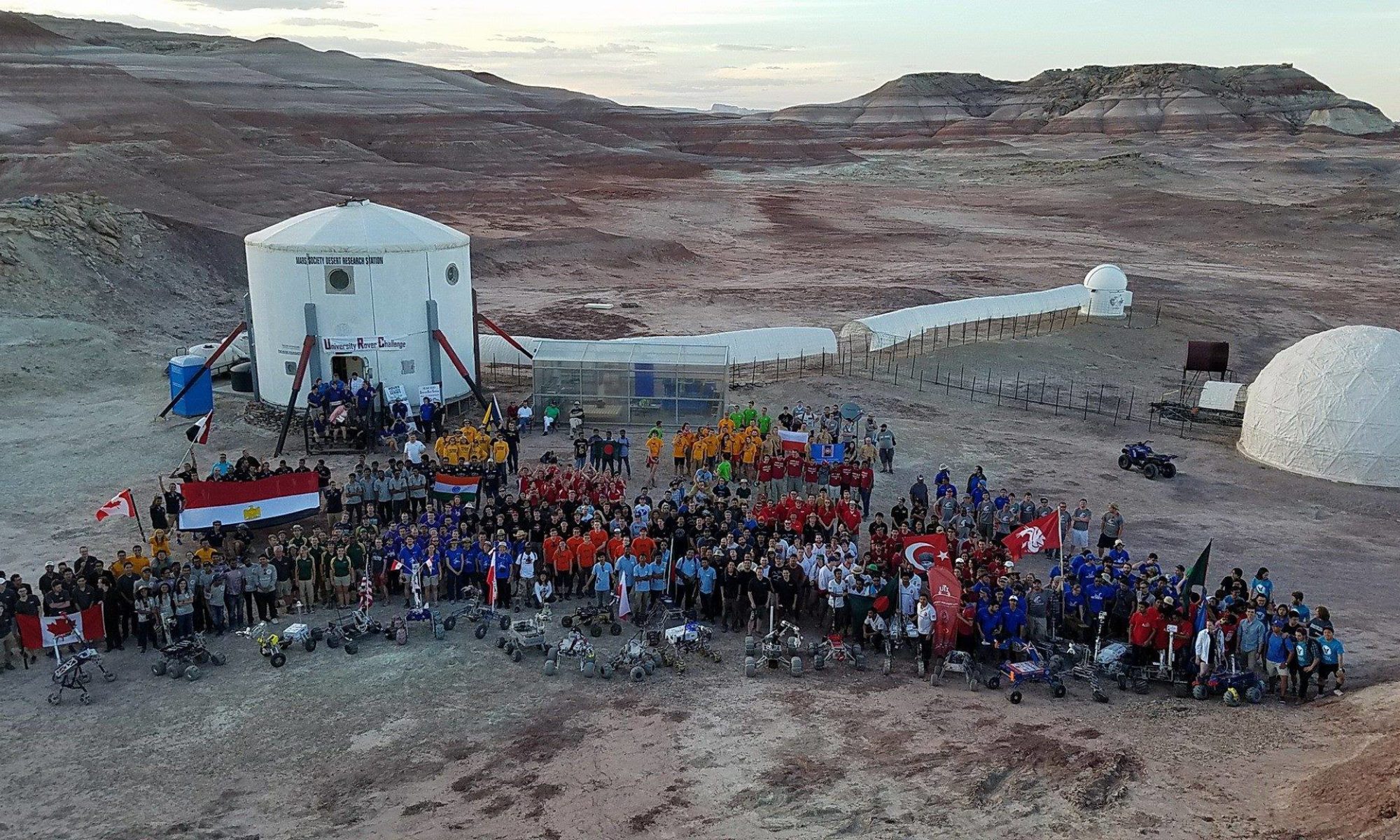

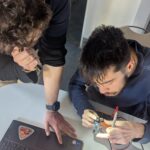
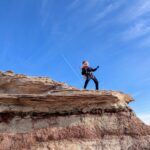
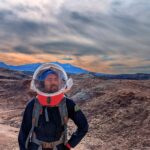
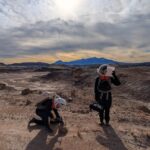
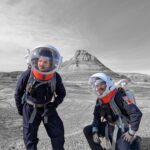
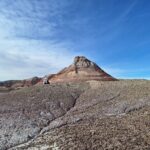
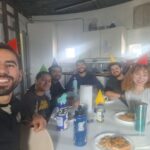
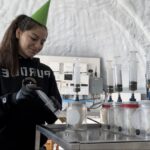
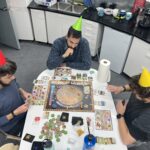
You must be logged in to post a comment.